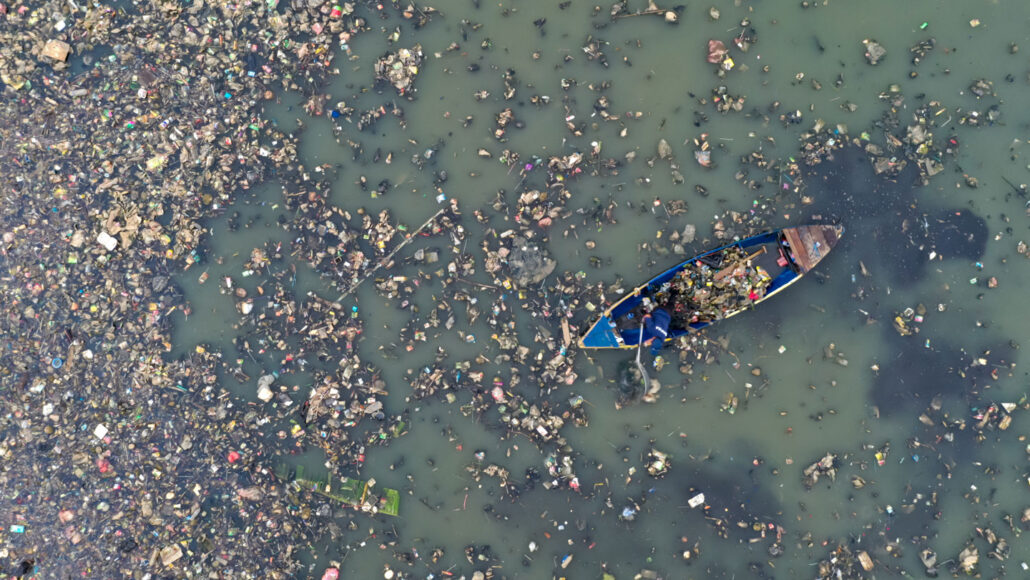Let’s learn about plastic pollution
Plastic is heaping up all over the planet, from the ocean floor to the highest mountaintops

Some 5 trillion pieces of plastic trash float in the world’s oceans. All that plastic weighs about as much as 38,000 African elephants.
Yunaidi Joepoet/Moment/Getty Images Plus
Plastics are amazing materials. Lightweight and sturdy, they can be as tough as a Kevlar vest or as flexible as a sandwich bag. Plastics are in everything from cars to clothes — and they’re often cheap to make. About 8.3 billion metric tons (18.3 trillion pounds) of plastic have been produced to date. That’s nearly 1,400 times the weight of the Great Pyramid of Giza. Some of that plastic is still in use. But about 5.8 billion metric tons (12.8 trillion pounds) have been discarded — about 970 Great Pyramids’ worth.
All that plastic trash is an environmental scourge. Only about 9 percent of plastic waste has been recycled. Another 12 percent has been burned. The remaining 79 percent wound up in landfills or in nature. And that plastic takes a long time to decay. A single Lego block may take centuries to break down.
Plastic litters the world from the top of Mount Everest to the seafloor. Many animals mistake this trash for food. If they get full, these animals may forget to eat real food and starve. Plastic rubbish in the oceans also ensnares birds, turtles and other wildlife.
Big pieces of plastic aren’t the only problem. Discarded plastic can break into tiny bits called microplastics. Winds scatter these fragments far and wide. Ocean currents can spread them throughout the sea. These pollutants build up inside animals. They also get into our food and drinking water. Each American is estimated to consume more than 70,000 microplastic pieces per year. Right now, no one knows what risk that might pose.
Scientists have some ideas about how to clean up this mess. The ambitious Ocean Cleanup project aims to fish plastic debris from the Great Pacific Garbage Patch. Microbes or mealworms with an appetite for plastic might someday chow down in landfills. And new nanotechnology could help microplastics decompose in the environment.
But many of these schemes are still far from practical. The best way to help Earth right now, researchers say, is to stop buying so much plastic — and then throwing it out — in the first place.
Want to know more? We’ve got some stories to get you started:
New recycling technologies could keep more plastic out of landfills Recycling plastics is really hard — especially into useful materials. But new chemical tricks could make it easier. (4/29/2021). Readability: 7.5
Camels have been dying after mistaking plastic for food Unwitting animals that find plastic in the wild often eat it. Feeling full on plastic, the animals don’t eat enough real food and starve to death. (1/15/2021). Readability: 7.7
Enormous floating barrier will corral ocean trash The Ocean Cleanup project aims to round up plastic in the Great Pacific Garbage Patch. That floating junkyard covers an area roughly twice the size of Texas in the ocean between California and Hawaii. (10/8/2018) Readability: 7.2
Explore more
Unmasking the pandemic’s pollution problem
Plastics at sea create a raft of problems
Pacific garbage patch may be 16 times bigger than thought
Expedition finds South Pacific plastic patch bigger than India
Polluting microplastics harm both animals and ecosystems
Some plastics learn to repair themselves
This plastic can be recycled over and over and over
Here’s how to make flip-flops biodegradable
Bioplastics could put some shrimp in your Barbie
‘Biodegradable’ plastic bags often don’t break down
Activities
Inspired to help fight plastic pollution? Check out these plastic-free project ideas. Reduce your plastic use by making a t-shirt tote bag or reusable gift wrap. Or raise awareness about plastic waste through a collage or comic strip. You could even organize a local plastic-pollution awareness day or park cleanup.







